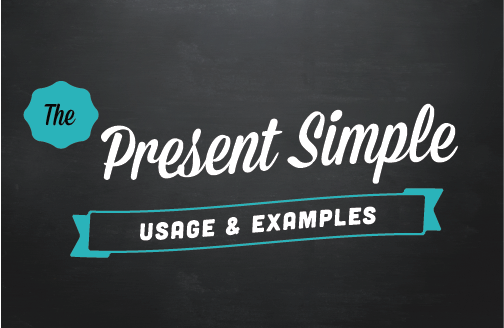Using the Present Simple Tense

The present simple tense isn't always so "simple" for learners but I promise this explanation will make things much clearer. In this section, we'll look at the different uses of the present tense.
[Note: Click here to learn how to form the present simple.
Present simple tense use #1: General truths & facts
We use the present simple to talk about things that are generally true or to state facts.
Examples:
- Smoking causes cancer.
- The sun rises in the east and sets in the west.
- Puppies are cute.
- The Danube River flows through Vienna, Austria.
- Five times five equals twenty-five.
- Babies eat, sleep and cry.
- Flowers need sunlight and water to grow.
Use #2: For mostly permanent situations
We use this tense to talk about situations that are mostly permanent, jobs or hobbies and things that always happen.
- We live in California.
- My father works at an elementary school.
- I play tennis and basketball.
- Accountants prepare tax returns.
- Seamstresses sew, hem and repair clothing.
- Racecar drivers drive fast.
- Where do you work?
- I don't ride the bus. I take the metro to work.
Use #3: To describe the frequency of actions
We use the present simple to describe how often we do things, from never to always and everything in between. Sometimes this describes a routine or habit (on Saturdays, once a week, usually, every summer, always. We also use this to describe something we don't do regularly: now and then, once in awhile, rarely, sometimes, when I'm tired).
Remember: Adverbs of frequency (e.g., never, rarely, sometimes, usually, always) come before the verb.
Examples:
- On Saturday mornings, I sleep late.
- My father rides the bus to work once a week.
- His girlfriend never drinks alcohol.
- When I'm tired, I watch television.
- They rarely win any matches.
- I always call my mother on her birthday.
Use #4: Actions set by a time table or schedule
We use the present simple tense for actions and events that are set by a timetable. This is often something that is set by an organization. Please note that this can actually describe an event happening in the future.
- The flight to Rome departs at five o'clock tonight.
- Don't worry, the bus comes every 20 minutes.
- When does the football game start?
- Class begins in two minutes.
- The conference ends on Friday.
Use #5: To describe a present state
We use the simple present with verbs that express opinions, states, feelings and emotions (not actions).
Common stative verbs include:
be, belong, seem, realize, think, believe, understand, like, love, hate, hear, smell, see, think, understand, want, wish.
Examples:
- I want that new dress. (NOT: I'm wanting that new dress)
- I love hamburgers. (NOT: I'm loving hamburgers).
- Do you smell popcorn?
- She understands this grammar.
- I don't like apples.
- They are very happy together.
If you need to review how to form the present simple tense please check this page. I go over the positive and negative forms, questions, spelling and give lots of examples.
- Home Page ›
- Main Grammar Page ›
- Present Simple Usage
